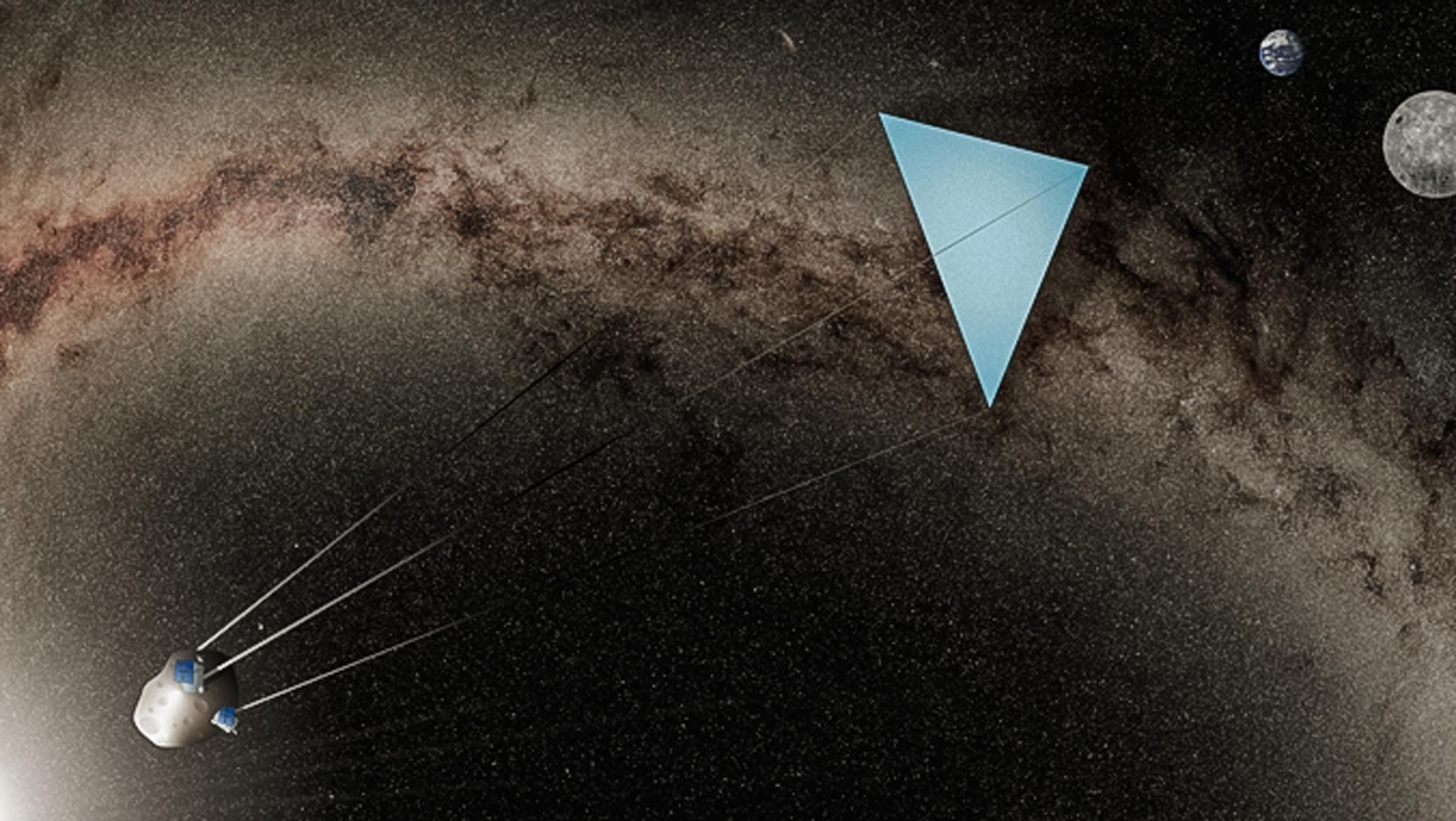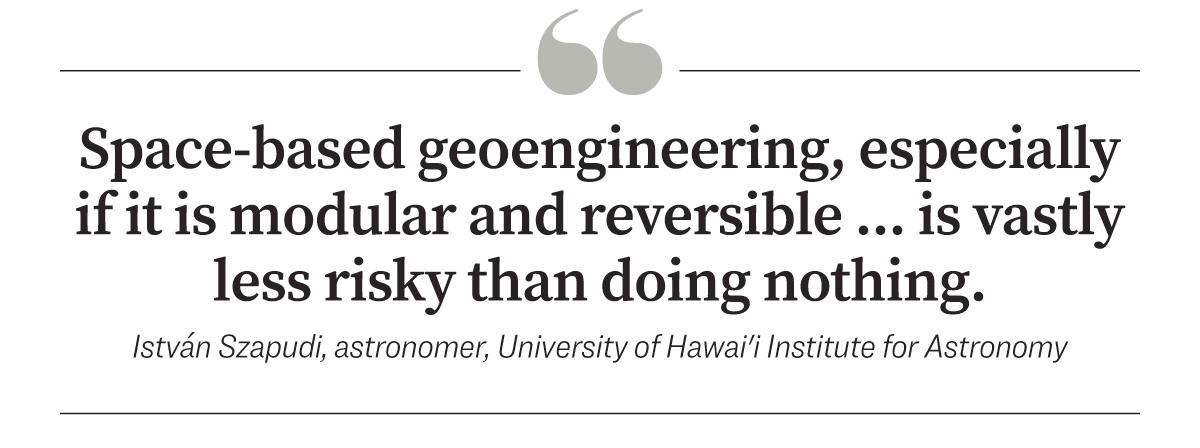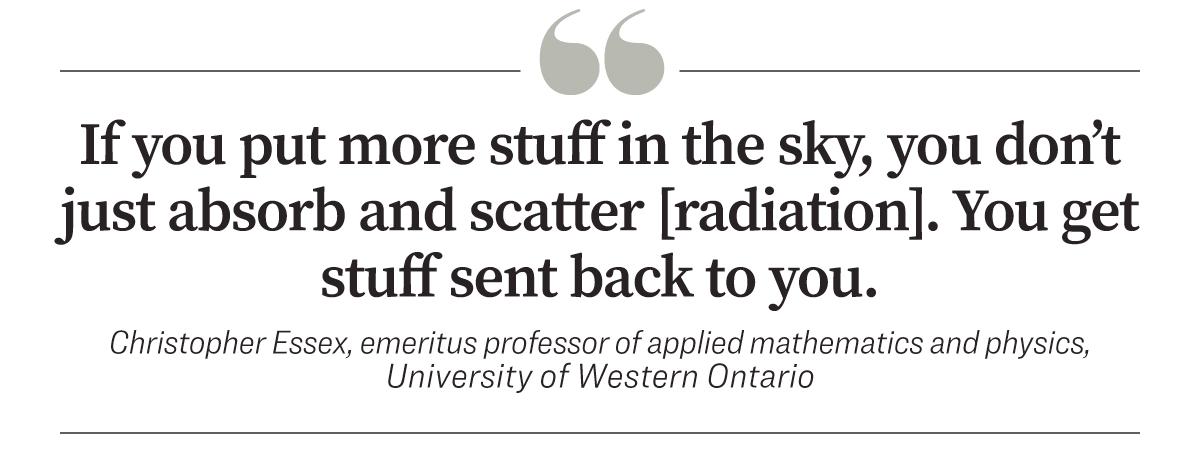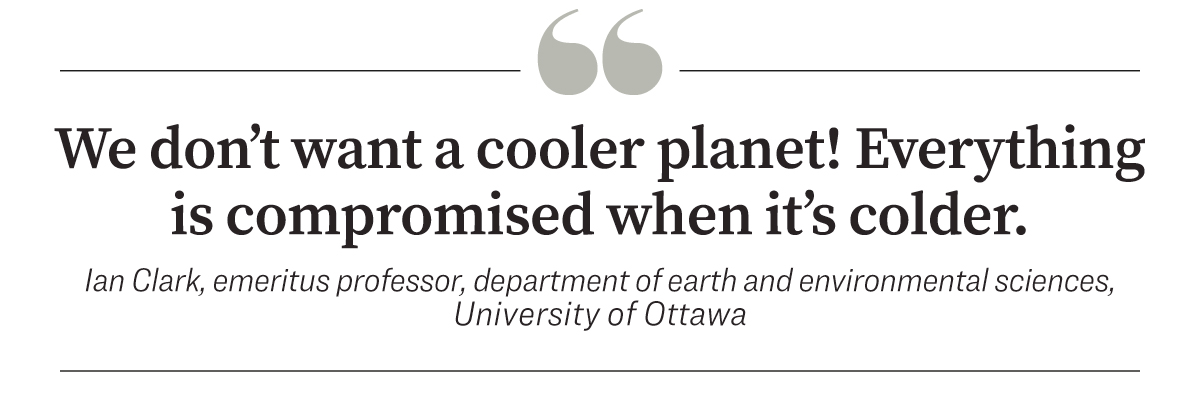(The Epoch Times)—The Earth is too hot and only getting hotter, according to governments and global bodies such as the United Nations; and the efforts to reduce carbon dioxide aren’t having enough of an effect.
“The world is passing through the 1.5°C ceiling and is headed much higher unless steps are taken to affect Earth’s energy imbalance,” James Hansen, previous director of the NASA Goddard Institute for Space Studies, said in January.
Thus, to buy more time, on Feb. 28, scientists from NASA and the National Oceanic and Atmospheric Administration (NOAA) released a report detailing a solution called “intentional stratospheric dehydration,” or in layman’s terms, flying planeloads of ice to 58,000 feet and spraying ice particles into the upper atmosphere.
“It’s a very small effect,” said lead author Joshua Schwarz, a research physicist at NOAA’s chemical sciences laboratory. “Pure water vapor doesn’t readily form ice crystals. It helps to have a seed, a dust particle, for example, for ice to form around.”
The researchers report that by dispersing small particles, or what it calls ice nuclei, into areas of the atmosphere that are both “very cold and super-saturated with water vapor,” water vapor in the atmosphere will “freeze-dry” and rain out of the atmosphere as ice crystals, cooling the planet.
The proposal is known as geoengineering—and NASA and NOAA’s joint plan is far from the only idea that’s jumped from the pages of science fiction, à la the 2013 Hollywood film “Snowpiercer,” to mainstream science.
István Szapudi, an astronomer at the University of Hawaii Institute for Astronomy, has turned to essentially geoengineering a giant parasol, or what he calls, a “tethered solar shield” to shield the Earth from a portion of the sun’s energy.
“Any sunshield works by blocking a small fraction, circa 1 percent to 2 percent, of sunlight reaching Earth,” Mr. Szapudi told The Epoch Times. “This is an almost undetectable amount by looking at the sun, but it would still cool the atmosphere to pre-industrial temperatures according to climate models. Specifically, the tethered sun shield is a solution that is lighter, thus cheaper, by many orders than traditional designs.”
Technology entrepreneurs Luke Iseman and Andrew Song of Make Sunsets have already taken action and have been creating reflective, high-altitude clouds by releasing balloons full of sulfur dioxide (SO2) into the stratosphere, what they call stratospheric aerosol injection (SAI).
“With climate change rapidly transforming our world, it’s crucial that we prioritize action over words,” Make Sunsets stated on its website. “We believe that SAI is the immediate, necessary solution to cool the planet and buy us time to transition to a more sustainable future.”
But scientists such as Christopher Essex, emeritus professor of applied mathematics and physics at the University of Western Ontario and former director of its theoretical physics program, said carbon dioxide (CO2) isn’t the driver of Earth’s warmer temperature and that such geoengineering measures are “extraordinarily dangerous.”
“I used to run a climate panel for the World Federation of Scientists,” he told The Epoch Times. “And we had one session where we presented on exactly why geoengineering is extraordinarily dangerous. It’s a crazy idea.”
Ian Clark, emeritus professor for the Department of Earth and Environmental Sciences at the University of Ottawa, echoed Mr. Essex.
“Geoengineering the climate is a very scary prospect,” he told The Epoch Times. “It’s something that should be relegated to the fantasy realm and science fiction.”
The Oxford Geoengineering Programme defines geoengineering as “the deliberate large-scale intervention in the Earth’s natural systems to counteract climate change.”
Solar Shield
According to Mr. Szapudi, climate change is a looming threat, and greenhouse gases, such as CO2, are a driving cause of that threat.
He published a report on July 31, 2023, outlining his proposal for a tethered sun shield, what he calls solar radiation management.
“Solar radiation management (SRM) is a geoengineering approach that aims to reduce the amount of solar radiation absorbed by the Earth to mitigate the effects of climate change,” Mr. Szapudi wrote in his report.
“Two strategies proposed for SRM involve adding dust or chemicals to the Earth’s atmosphere to increase the reflected fraction of sunlight or reduce the incoming radiation from space with solar shades or dust.”
He’s advocating for a sun shield because he believes it is less risky.
When asked to comment on Mr. Essex’s claim that geoengineering is “extraordinarily dangerous,” Mr. Szapudi said: “Space-based geoengineering, especially if it is modular and reversible in design, carries less risk than Earth-based SRM injecting dust or chemicals into the atmosphere, and [it is] vastly less risky than doing nothing.
“Given what we know today and the known risks of climate change, a tethered sun shield near the L1 Lagrange point at 1.5 million kilometers from us would not present an obvious risk to Earth. The benefit is preventing and even reversing negative effects of climate change.”
NASA defines Lagrange points as “positions in space where objects sent there tend to stay put” because of oppositional gravitational forces. The agency has identified five such points.
Mr. Szapudi acknowledged that there could be unknown risks and said his proposal would need to undergo a more detailed scientific study, followed by a preliminary engineering study.
“Such a study would specify the location, the design, the materials, etc., that are most suitable. At that point, a quantitative and thorough risk assessment can be done, and a decision can be made [on] whether to go ahead with the implementation,” he said. “In general, any big project would go through many layers of risk, cost, and benefit analyses as the design shapes up, and any showstoppers identified would halt the project. Ultimately, only the most cost-effective and safest design, if any, will be implemented.”

But Mr. Essex, who built his first computer climate model in the 1970s and was chairman of The Global Warming Policy Foundation’s Academic Advisory Council, said part of the problem with a sun shield is that it looks at the climate from an engineering perspective instead of a scientific one.
“You might be able to generate some plausible argument for defining the actual parasol and getting into space,” he said. “But the part you don’t understand is how climate will respond to it.
“Because we’ve been pushing this propaganda as being able to solve a problem, it starts to appear like an engineering problem where you can do trial and error and see if it works or doesn’t work. But the climate problem is not an engineering problem; it’s a fundamental scientific problem. … It’s much more subtle and complex.”
Mr. Essex explained that solar radiation travels through the atmosphere, and while some believe that radiation causes warming at that point, that’s not what’s happening. Instead, the shortwave radiation hits the Earth, which heats the surface, and then the ground radiates that energy as longwave radiation into the atmosphere, increasing temperature.
“With the parasol, they’re trying to control shortwave radiation,” Mr. Essex said. “And it’s an indirect way of controlling what goes on with the longwave, the infrared.
“People like to think the Earth is like a brick, and it’s getting too hot, so we need to cool it down—global boiling, that’s the slogan—well, that’s ridiculous. It’s just about hyping up anxiety and fear so the people will go along with things and not question what’s going on.
“There’s so much going on in the atmosphere. It’s complex, conductive, and turbulent.”
Balloons of Sulfur
Like a sun shield, reflective aerosols fall under the definition of solar radiation management. But unlike a sun shield, reflective aerosols aren’t modular or immediately reversible.
Make Sunsets fills balloons with SO2, releases them, and then pops them once they reach the stratosphere to release the gaseous contents. The effect, Make Sunsets claims, is similar to volcanic eruptions.
“Emissions from volcanic eruptions have been cooling the Earth for millions of years, like Mt. Pinatubo in 1991. We are simply mimicking Mother Nature. … In 1991, Mt. Pinatubo, a stratovolcano, cooled the Earth by 0.9F or 0.5C for over a year,” it stated on its website.
So far, the group has released 49 balloons since April 2022 and claims that it has “neutralized 13,791 ton-years of warming.” It says its “clouds” of sulfur stay in the sky for between six months and three years, “depending on the altitude and latitude at which we release them.”
A group of Massachusetts Institute of Technology scientists reported in 2020 that releasing reflective aerosols into the stratosphere “could have other long-lasting effects on the climate.”
“Solar geoengineering would significantly change extratropical storm tracks—the zones in the middle and high latitudes where storms form year-round and are steered by the jet stream across the oceans and land,” their report reads. “Our results show that solar geoengineering will not simply reverse climate change. Instead, it has the potential itself to induce novel changes in climate.”
But, Make Sunsets claimed that, without mitigation such as reflective aerosols, “10s of millions of people will die, and 20 percent of species may go extinct.”
“We believe the best time to field test and scale SAI is now,” the group stated.
The group says it has been in contact with the FBI, the Federal Aviation Authority, and the NOAA.
“They are aware of our business and activities,” its website reads.
Mr. Essex said the problem with adding reflective aerosols is even more complicated than most realize.
“If you put more stuff in the sky, you don’t just absorb and scatter [radiation]. You get stuff sent back to you,” he said. “Depending on what kind of stuff and where it is—how high up it is—will affect whether it warms or cools. It could do both.”
Mr. Essex explained that if clouds are high enough, they help cool the atmosphere by emitting radiation into space instead of reflecting it back to Earth. Similarly, high enough CO2 cools the atmosphere instead of heating it because there’s less absorption between it and space.
“It depends on where it is in the atmosphere,” he said. “You have to do the whole radiative transfer problem to get this right. And a few groups are doing that, but they have a lot of trouble publishing because sometimes, they come up with answers that don’t agree with the narrative.”
Mr. Essex said simple adjustments can also change how water moves in and out of the atmosphere.
“All it requires is a little tweak of the right thing, and you can get completely different weather patterns. And then maybe you won’t be able to grow things you used to, and there’ll be problems with daily life that you never had to deal with before,” he said. “It can go both ways—cold can become warm, wet can become dry, and dry can become wet, and those changes can occur over the whole Earth.”
Make Sunsets acknowledged the risks associated with injecting the atmosphere with reflective aerosols, including ozone depletion, but stated that “science and math back us up.”
“Modeling shows a slight but meaningful depletion in ozone. While we’ll closely monitor this, it’s important to note that worst-case scenarios for ozone depletion amount to 5–10 percent on average,” its website reads. “This is less than half of what CFCs caused and may be at least partially offset by reduced global warming’s positive impact on ozone.”
In the late 1970s, scientists warned that manmade chemicals, such as chlorofluorocarbons (CFCs), were depleting the ozone. Then, in 1985, a hole was confirmed over Antarctica, leading to increased fear of skin cancers, damaged ecosystems, and the loss of plants and crops. In 1989, governments adopted the Vienna Convention for the Protection of the Ozone Layer, providing the framework for the Montreal Protocol, which eventually resulted in the phase-out of substances such as CFCs.
- Concerned about your life’s savings as the multiple challenges decimate retirement accounts? You’re not alone. Find out how Genesis Precious Metals can help you secure your wealth with a proper self-directed IRA backed by physical precious metals.
“Around 99 percent of ozone-depleting substances have been phased out and the protective layer above Earth is being replenished. The Antarctic ozone hole is expected to close by the 2060s,” the U.N. Environment Programme stated regarding the effort.
“Every year, an estimated two million people are saved from skin cancer and there are broader benefits too, as many of the ozone-depleting gases also drive up global temperatures.”
Mr. Clark said injecting aerosols into the stratosphere is dangerous, and not just because of the effect on storm tracks.
“We did a lot of work to try [to] clean up the atmosphere,” he said. “The Clean Air Act addressed things like nitrous oxide and sulfur fuels and diesel and stuff like that. And then they want to undo all that work? It seems pretty reckless to me.
“And we don’t want a cooler planet! I mean, history tells us that European civilization flourished under a warmer climate. And you know what we’re seeing—with precipitation, setting records and all the rest, and consequences of a warmer planet—is far better conditions to have than what happens when things freeze earlier and for longer. Agriculture is compromised. Transportation is compromised. Everything is compromised when it’s colder.”
Neither Mr. Iseman nor Mr. Song responded to The Epoch Times’ request for comment. Solar radiation management isn’t new, nor is it the only way some have looked to control the climate.
Indeed, Mr. Essex said he’s seen geoengineering ideas posited by scientists since the 1990s, and other possible “solutions” have included generating iron filing to cause algae blooms in the ocean, burning sulfur dioxide from ships to generate marine clouds, and using U.S. Navy artillery to fire dust into the stratosphere.
“The imagination of them all is quite extensive,” he said.
Mr. Essex believes that governments will eventually want to “control the weather with tax policy.”
“That’s basically what we have as the end game. Geoengineering is just another effort to try to control the weather,” he said.
It’s becoming increasingly clear that fiat currencies across the globe, including the U.S. Dollar, are under attack. Paper money is losing its value, translating into insane inflation and less value in our life’s savings.
Genesis Gold Group believes physical precious metals are an amazing option for those seeking to move their wealth or retirement to higher ground. Whether Central Bank Digital Currencies replace current fiat currencies or not, precious metals are poised to retain or even increase in value. This is why central banks and mega-asset managers like BlackRock are moving much of their holdings to precious metals.
As a Christian company, Genesis Gold Group has maintained a perfect 5 out of 5 rating with the Better Business Bureau. Their faith-driven values allow them to help Americans protect their life’s savings without the gimmicks used by most precious metals companies. Reach out to them today to see how they can streamline the rollover or transfer of your current and previous retirement accounts.









